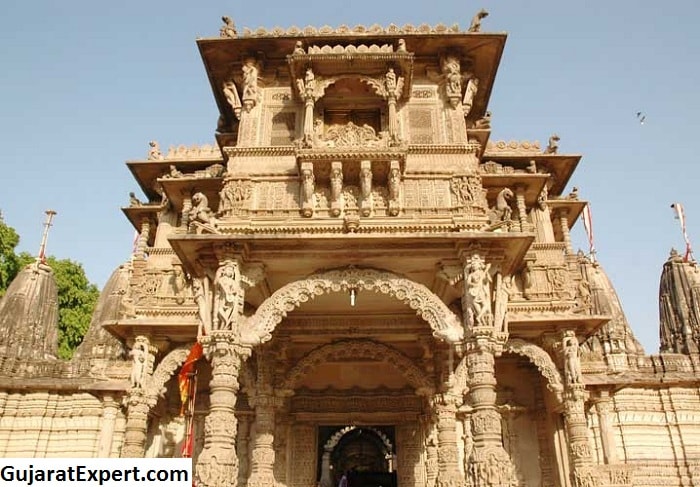Shahibaug, Madhupura and Delhi Darwaja are thriving commercial hubs. The busy streets filled with traffic are a source of noise and the yard of Madhupura off the main road is a hive of activity as traders in provisions conduct their wholesale business. Surrounded by this sea of noise and activity sits the quiet island of peace and quiet that is the Hutheesing Jain Temple (Hatheesingh, as some call it). It is also a part of Ahmedabad’s rich heritage, part of which is rooted in commerce.

Sidelight
The Jains are a prosperous business community in Ahmedabad exemplified by the Lalbhai Group famed for its Arvind fabrics. The family history goes back two hundred and fifty years when Sheth Shantidas laid the foundations of a business empire followed by Sheth Anandji Kalyanji. Shrenik Lalbhai is eleventh in the line, managing the Lalbhai group as well as the Sheth Anandji Kalyanji Trust that holds vast number of properties besides managing Jain temples at Ranakpur, Shatrunjay, Girnar, Tarangi, and others. The Trust is also engaged in restoration activities and support for other Jain temples such as the restoration of Palitana temples and the Hutheesing Jain temple located on the Shahibaug Road, just a few kilometers from Kalupur railway station. This shows how powerfully entrenched yet unobtrusive the Jain community is in Ahmedabad and their solidarity because Hutheesing temple was not built by any member of the Shantidas Sheth family but is managed by the Hutheesing Family Trust.
History
Sheth Hathisinh Kesarisinh, a wealthy trader of Ahmedabad started construction of the Hathisingh Jain temple but passed away at a young age of 49. It was left to his wife Shethani Harkunvar and their son Maganbhai Hutheesing, to complete the temple in 1850 AD at the then astronomical figure of Rs 8 lakhs. The temple is dedicated to Dharmanath, the fifteenth Tirthankara. It was a spiritual act as well as a humanitarian gesture since India was in the grip of a famine at that time and, by employing hundreds of workers for two years, the family supported people.
The Temple
Surrounded by chaotic traffic and noise the temple is a haven. Enter the spacious temple premises from the beautifully carved ornamental gate with its toran and you enter a world of peace and quiet. You see the main temple and another smaller building, as well as a towering pillar on the lines of the Jain Manastambha and Kirti Stambha, found in Chittor, Rajasthan. Built-in fine white marble, the temple is a typical representative of Jain style of architecture. The temple was built under the supervision of its architect, Premchand Salat. The main structure in white marble is two-storeyed and houses the idol of Mulnayak Lord Dharamnath, the 15th Tirthankar. There are eleven idols in the main temple on the ground floor, five in bay sanctuaries and six in the cellar and the main building has exquisitely carved pillars. In addition, there is an open courtyard in the middle surrounded by a building within the complex and, as you walk the gallery, you come across 52 small shrines, each housing an idol in exquisitely carved and polished marble of each of the Tirthankaras.
The temple opens to visitors from 9 AM to 1 PM and from 5 PM onwards every day. There is no admission fee.
Getting There
The Hutheesing Jain Temple is just 3 km from Ahmedabad railway station and can be reached by local buses, auto-rickshaws and hired cars. The landmark sits on the busy Delhi Darwaja-Shahibaug main road. Everyone is welcome.
When one views the temple and the beautiful idols within, it is not just religion or spirituality but a wider angle view of the Jains and their contribution to the city. Apart from charitable institutions the wealthy Jains of Ahmedabad, even to this day support educational institutions founded by their forebears and even the Cancer hospital in civil hospital receives their support.


Leave a Reply